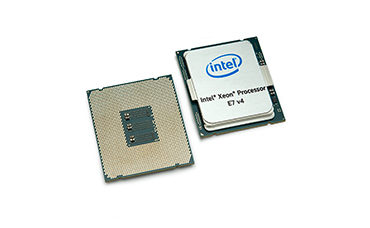Intel Announces New High-end Xeon Processor E7-8894 v4

(Source: Intel)
Intel Corp. today announced enhanced performance capabilities from its new Xeon processor E7-8800 v4 product family with the addition of the new high-performance E7-8894 v4 to its SKU stack.
The company said the new chip targets scale-up workloads, such as large databases, ERP, CRM, OLTP and in-memory analytics, and emphasized its scale-up capabilities, allowing more resources (more sockets and more memory) to be added to a single node image.
Intel set pricing at $8,898, which means an eight-socket server will cost $71,000 for the CPUs alone, with a fully-equipped server potentially coming it at more than $300,000.
Since its introduction in June 2016, the 14nm-based Intel Xeon E7-8800/4400 v4 family “has delivered sustained and sizable improvements in instructions-per-cycle (IPC),” Intel said in its announcement, adding that it “has captured several record-breaking results based on key performance benchmarks, including SAP SD 2-Tier, SPECjbb2015, SPECcpu2006, LINPACK and SAP BW edition on SAP HANA.”
Intel emphasized “the increasing demands for 24x7x365 days availability and uptime for mission-critical systems,” noting the new chip’s utilization of Intel Run Sure Technology. “These features are unique to the Intel Xeon processor E7 E7-8800 v4 family to reduce unplanned downtime, increase data integrity and reduce costs associated with lost revenue and service/maintenance.”
The Xeon E7-8894 v4 supports four to eight sockets (up to 32 sockets via node controller) with configurations supporting up to 24 processing cores and up to 24 TB of memory per eight-socket system.
 Industry watcher Patrick Moorhead, president of Moor Insights & Strategy, said the new chip continues up the path of its high-end workload Xeon predecessors. “I see this going straight up against IBM POWER8 architectures…because of the high memory bandwidth and the types of workloads you’re looking at, like ERP workloads from SAP, Oracle databases, really focused on the in-memory database types of workloads,” he said.
Industry watcher Patrick Moorhead, president of Moor Insights & Strategy, said the new chip continues up the path of its high-end workload Xeon predecessors. “I see this going straight up against IBM POWER8 architectures…because of the high memory bandwidth and the types of workloads you’re looking at, like ERP workloads from SAP, Oracle databases, really focused on the in-memory database types of workloads,” he said.
“I’m impressed,” Moorhead added. “It’s been years in the making.” He noted the difficult changeover Intel made about five years ago to Xeon from Itanium processors when AMD’s Opteron came on the market. “They were really set back with Opteron… and that got them onto x86 on the highest end, and it’s really been a ton of investment to be able to deliver this level of memory bandwidth and RAS features. A lot of (Xeons) are in these non-stop applications, like a credit card clearinghouse where it just can’t go down, it has to be ultra-reliable.
“This market at the ultra high-end doesn’t move very quickly because customers are running their most critical workloads that are the backbones of their businesses, so churn is not necessarily a positive thing,” he said.
Moor noted that while Intel faces competition pressure at the high end from IBM, new competitive pressure is about to be unleashed by AMD its new Zen processors at the midrange.
Intel said the E7-8894 v4 also has new security features built into the processors, providing up to 70 percent more encryption performance per core4, so that “organizations can better protect a growing amount of data with minimal impact to their system’s performance.”











